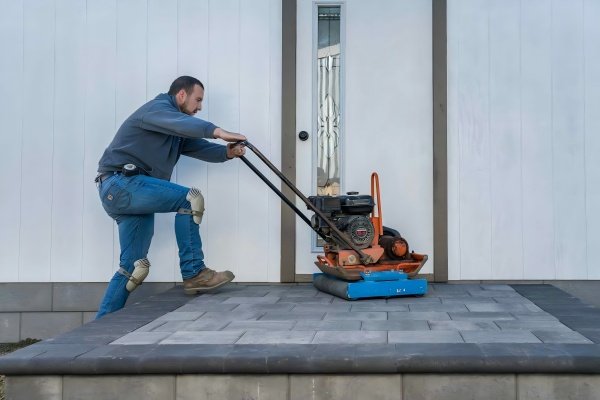A plate compactor is a powerful piece of equipment used in construction and landscaping to compact soil, gravel, and asphalt. While effective, improper use can lead to accidents or ineffective compaction. This guide is designed to ensure that beginners understand how to operate a plate compactor safely and efficiently.
Understanding the Plate Compactor
Before diving into operation, it’s essential to understand what a plate compactor is and how it works. A plate compactor consists of a heavy, flat plate that vibrates rapidly to compress the ground beneath it. This tool is commonly used for creating a solid base for paving, laying foundations, or preparing a site for landscaping.
Guide to Plate Compactors
Plate compactors excel in preparing ground for landscaping or construction by vibrating to consolidate materials effectively. They are user-friendly, with handles for easy maneuverability on uneven terrain. When considering a Plate Compactor, look for models with adjustable speeds to adapt to various soil types. This tool is indispensable for achieving professional-grade results in groundwork.
Types of Plate Compactors
There are two primary types of plate compactors:
- Single Direction Compactors: These move forward and are ideal for compacting soil and gravel.
- Reversible Compactors: These can move both forward and backward, allowing for better maneuverability in tighter spaces.
Knowing which type you have is crucial for effective operation.
Essential Safety Gear
Safety should always be your top priority when operating a plate compactor. Before you start, ensure you have the following personal protective equipment (PPE):
- Safety Goggles: Protect your eyes from dust and flying debris.
- Ear Protection: Plate compactors can be loud; earplugs or earmuffs can help prevent hearing damage.
- Gloves: Wear sturdy gloves to protect your hands from vibrations and sharp edges.
- Sturdy Footwear: Steel-toed boots are recommended to protect your feet.
Preparing the Site
Proper site preparation is key to safe and effective compaction. Follow these steps to prepare your work area:
- Clear the Area: Remove any debris, rocks, or vegetation from the site. This prevents damage to the compactor and ensures a smooth compaction process.
- Assess the Soil: Check the moisture level of the soil. Ideally, it should be slightly damp for optimal compaction. Too much moisture can lead to muddy conditions, while overly dry soil may not compact well.
- Mark the Compaction Area: Clearly mark the boundaries of the area you intend to compact. This will help you stay focused and avoid missing spots.
Operating the Plate Compactor
Once your site is prepared, you can begin operating the plate compactor. Follow these steps for safe use:
- Read the Manual: Always refer to the manufacturer’s manual for specific instructions and safety guidelines for your model.
- Start the Machine: Ensure the compactor is on a stable surface. Start the machine according to the manufacturer’s instructions, usually involving a pull-start or key ignition.
- Set the Depth: Adjust the depth based on the material you are compacting. For soil, a depth of about 4 to 6 inches is ideal for effective compaction.
- Begin Compaction: Move the compactor slowly and steadily across the area. Overlap each pass by about 50% to ensure even compaction. Avoid turning the compactor sharply, as this can cause it to vibrate excessively.
Managing Vibrations
Operating a plate compactor involves significant vibrations, which can be harmful over time. To mitigate these risks, consider the following:
- Take Breaks: Regular breaks can help reduce exposure to vibrations. Switch tasks periodically if possible.
- Use Anti-Vibration Gloves: These can help absorb some of the vibrations, making operation more comfortable.
- Maintain Proper Posture: Keep your arms slightly bent and avoid locking your elbows to reduce strain.
Post-Operation Care
After using the plate compactor, proper care is essential:
- Clean the Equipment: Remove any dirt or debris from the machine to prevent rust and damage.
- Inspect for Damage: Check the plate and other components for wear and tear. Address any issues before the next use.
- Store Properly: Store the plate compactor in a dry, secure location to protect it from the elements and unauthorized use.
Conclusion
Using a plate compactor can greatly enhance your landscaping or construction projects when done safely and correctly. By understanding the equipment, wearing appropriate safety gear, preparing your site, and following safe operating procedures, you can ensure effective compaction while minimizing risks. With practice and adherence to safety guidelines, even beginners can operate a plate compactor like a pro.

